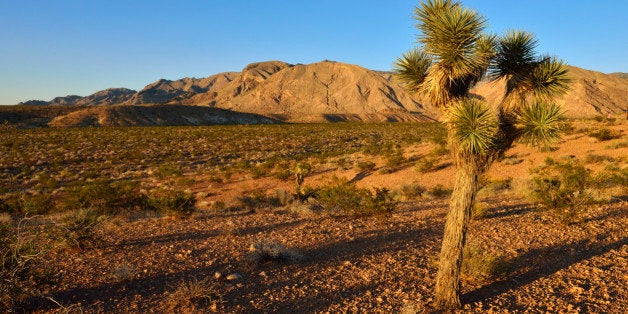
Last year a study of the world's deserts found that increased levels of atmospheric carbon dioxide – one of the primary greenhouse gases responsible for climate change – has resulted in a gradual greening of some arid regions over the past 30 years. Now a new study takes our knowledge of how carbon dioxide affects deserts one step further. According to a paper published on April 6 in the journal Nature Climate Change, deserts can serve as a "sink" for significant levels of carbon dioxide, removing it from the atmosphere and storing it in the ground.
The paper is the result of a 10-year study in the Mojave Desert, in which researchers exposed small plots of land to elevated CO2 levels of 550 parts per million, the equivalent to levels predicted to be in the atmosphere in the year 2050. Other plots received a little below Earth's current levels of 400 parts per million. At the end of the experiment, they dug up the soil and plants. They found that the CO2 levels a meter below the surface of the "2050" plots had increased dramatically, an indication that the desert was absorbing and fixing the carbon dioxide.
The experiment shows that arid ecosystems "are a major sink for atmospheric carbon dioxide," Washington State University professor R. Dave Evans, the study's lead author, said in a news release. "As CO2 levels go up, they'll increase their uptake of CO2 from the atmosphere. They'll help take up some of that excess CO2 going into the atmosphere. They can't take it all up, but they'll help."
Deserts won't be capable of absorbing as much CO2 as forest ecosystems, which contain more organic matter. The deserts, on the other hand, absorbed the carbon in the micro-organism-rich layer of soil known as the rhizosphere, near the roots of the plants in the soil.
All the same, Evans said this is an important, previously unknown element of the entire global carbon budget. He said deserts like the Mojave could increase their absorption of CO2 enough to account for between 4 and 8 percent of current emissions. All told, the researchers' analysis indicates that arid regions could increase their CO2 intake enough to account for somewhere between 15 and 28 percent of all carbon dioxide currently being absorbed by all of the Earth's land surfaces.
You can see Evans discuss the experiment and see the sites in the Mojave Desert below:
